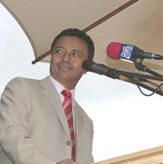The Adventist Development and Relief Agency (ADRA) is continuing its assistance to the tsunami-affected Solomon Islands with a rehabilitation project to help 440 households on Choiseul Island rebuild their homes. The 14-week project began the first week of May and will benefit approximately 2,640 tsunami survivors.
In early April, a massive underwater earthquake triggered a 33-foot tsunami that swept through the western region of the Solomon Islands, leaving devastation in its wake. ADRA responded immediately to the disaster, providing emergency supplies for survivors in the coastal areas of the Choiseul, Ranongga, and Vella Lavella islands, including construction tools, cooking supplies, and basic agricultural tools to help affected families begin to rebuild their lives.
While coordinating its needs assessments and initial emergency relief efforts with the United Nations Disaster and Assessment Coordination (UNDAC) and other humanitarian agencies, ADRA teams discovered that many villages on Choiseul Island lacked suitable housing, with one village alone reporting an estimated 300 homes destroyed or uninhabitable.
Although most villages are not this densely populated, ADRA will work with Choiseul Island residents in nearly 40 villages to rehabilitate, rebuild, and assist in redesigning their homes to be more resilient. ADRA will purchase and operate a portable sawmill and chainsaw to process local trees into lumber for the new homes and will provide tsunami-affected households with construction tools and supplies.
“The project will be easily sustainable, as village members in the Solomon Islands primarily build their own homes,” says Matthew Brown, country director for the ADRA Solomon Islands office based in the capital city of Honiara.
Traditionally, Solomon Islands homes are elevated on posts and constructed with timber frames. Roofs are covered with Sago palm leaf thatch. An experienced builder will train village members in how to build sound permanent shelters by constructing cross-braced frames and laying solid foundations. Two volunteer builders will also help reconstruct homes and offer technical advice.
A “block and tackle” pulley system, which allows heavy weights to be more easily manipulated, will be used to straighten homes that were bent on their posts by the earthquake and subsequent tsunami.
“The building tools will stay within the villages so that in the future they can be used to construct new homes and also provide a means of maintenance for existing homes. The skills taught will be passed on to others within the family unit and to other communities,” Brown continues. “In addition, we believe this project will instill in the village members a sense of community pride and a belief in their self-sufficiency as they begin to rebuild their lives after such traumatic losses.”
Along with the shelter reconstruction efforts, ADRA is installing water tanks for the villages of Gorabora and Kakasa, whose water supplies were contaminated by the tsunami.
Beneficiary households will be selected based on ADRA’s assessment of needs and the recommendations of the Village Disaster Committees (VDCs), which have been set up in tsunami-affected villages on Choiseul. ADRA is liaising with the VDCs and the Lauru Peoples’ Association, a local organization, to meet the changing needs of the survivors.
This project is co-funded by ADRA New Zealand, ADRA Australia, ADRA Norway, ADRA Netherlands, ADRA United Kingdom, ADRA Canada, and HELP International.

